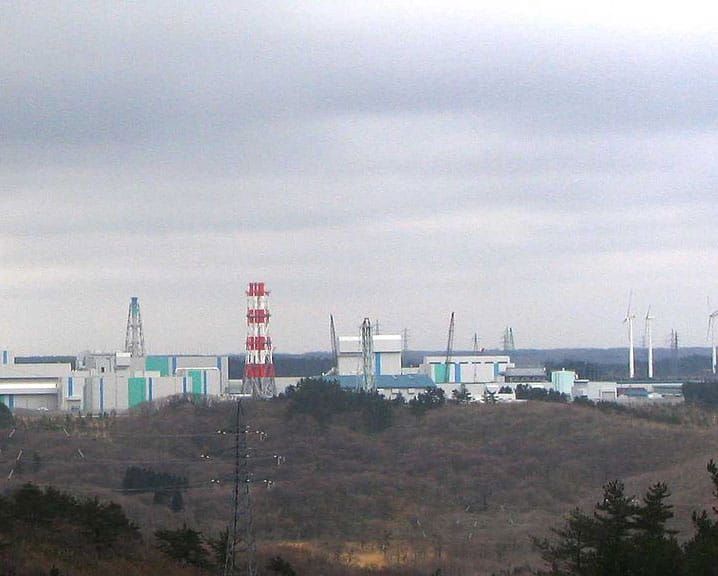Make US-Japanese nuclear cooperation stable again: End reprocessing
By Victor Gilinsky, Henry Sokolski | June 27, 2018
 The Rokkasho reprocessing facility.
The Rokkasho reprocessing facility.
In a little-noticed but remarkable statement last week, Japanese Foreign Minister Taro Kono described a key pillar of the Japanese-American alliance—US-Japanese peaceful nuclear cooperation—as “unstable.” His pronouncement comes on the eve of the automatic renewal of the 1988 US-Japan peaceful nuclear cooperation agreement in July and days after US officials privately pressured Tokyo to reduce its vast plutonium holdings (some 45 tons —which translates to nearly 9,000 nuclear bombs’ worth).
The starting point in dealing with this massive plutonium stockpile: Keep it from growing. That means Tokyo needs to freeze plans to open its large Rokkasho reprocessing plant, which can separate eight more tons of plutonium a year.
The United States and Japan got to this awkward spot in the 1970s and ‘80s, when Tokyo insisted it needed plutonium to fuel a future generation of fast breeder reactors and sought permission to extract it from irradiated US-supplied uranium fuel. We had earlier allowed the Euratom countries to do this and so President Reagan, hesitating to distinguish among close allies, relented. As Under Secretary of State Richard T. Kennedy told the Senate in 1982 in explaining blanket approvals for Japan and Euratom, “The US will not inhibit or set back civil reprocessing and breeder reactor development abroad in nations with advanced nuclear programs where it does not constitute a proliferation risk … nations which regard the uses of plutonium as crucial to meeting their future nuclear energy needs.”
The 1988 understanding with Japan was the only US nuclear cooperation agreement with an individual country that granted blanket reprocessing approval for the duration of the agreement (which, with automatic extensions, effectively meant forever). The agreement approved reprocessing for Japan both in British and French reprocessing plants and in any that Japan itself might build. Meanwhile, Japan’s fast breeder development faltered (as did other such breeder programs around the world), and Japan installed no commercial reactors of this type. Because it has a large fleet of nuclear power plants that produce spent nuclear fuel containing plutonium and reprocessing arrangements at home and abroad, Japan has amassed an enormous plutonium stockpile.
The legal basis of this blanket approval was problematic from the start. The General Accounting Office (GAO) told Congress that the agreement was so permissive it violated the strict nonproliferation requirements in Section 131 of the US Atomic Energy Act. For this reason, the Senate Foreign Relations Committee urged the Reagan administration to renegotiate the agreement, but the administration overrode Congressional opposition.
In Section 131 b 2, the Atomic Energy Act requires that reprocessing of nuclear reactor fuel supplied by the United States, and extraction of plutonium, take place only with US permission and sets forth the standard for granting reprocessing approvals: The secretaries of Energy and State must find that the action “will not result in a significant increase of the risk of proliferation.” The “foremost consideration” in making that finding is whether the United States will have “timely warning,” that is, “well in advance of the time at which the non-nuclear weapon state could transform the diverted material into a nuclear explosive device.”
The GAO rejected the Reagan administration’s claim that it was complying with the law by making a one-time finding that Japanese reprocessing would entail no “significant increase” in proliferation risk. The GAO said that “it cannot be asserted with any degree of confidence that over the succeeding 30-year period … the timely warning standard can be applied in a systematic and effective way to the blanket approvals at issue here.”
The GAO was of course right. Japan has accumulated roughly 10,000 kilograms of plutonium at home and another 35,000 kg abroad over the course of the agreement. Can anyone claim with a straight face that this has not increased proliferation risks both in East Asia and globally? Why otherwise would US officials have asked Tokyo to reduce its plutonium holdings?
The plain fact is that the timely warning standard cannot be met in dealing with separated plutonium because, as the International Atomic Energy Agency acknowledges in its safeguards documents, the material can be fashioned into a nuclear weapon in a matter of days (in contrast with the low enrichment fuel used in common power reactors, which is far from weapons grade). It is impossible to devise any system that can provide warning in time for an effective international response. A country with a scientific and technological base, if it had secretly done preparatory work, could probably arm nuclear weapons in a matter of weeks after accessing its store of plutonium.
The official justification for allowing nuclear power systems based on plutonium—a fuel that is also a nuclear explosive—argued that they would be subject to IAEA inspections, which are intended to deter diversion of fissile material to military use by providing warning in time to thwart any such diversion. But the IAEA couldn’t do that in the case of separated plutonium, so something had to give. What buckled was the definition of timely warning, which was rationalized to be met if we had sufficient confidence that the recipient of our exports would not build nuclear weapons. Hence, Under Secretary of State Kennedy could speak in 1982 of countries like Japan where nuclear explosive materials do “not constitute a proliferation risk.”
The situation today, though, is radically different. The economic prospects of civilian nuclear power are now generally far less favorable than they were then; the rationale for plutonium-fueled breeder reactors, once widely believed to be the energy source of the future, has essentially evaporated. There is no longer any reason to twist the plain meaning of the Atomic Energy Act’s requirement for timely warning. It effectively rules out approvals for plutonium separation, and therefore for reprocessing. Whereas one could have once plausibly argued that this would impose a severe cost on Japan, the situation is now completely reversed: If Japan shut down its Rokkasho reprocessing plant, it would now be freed from an outdated policy and would save a great deal of money.
The Rokkasho decision is of course up to Japan. But the United States should make clear where it stands, which it has not yet done. Such a step should be part of an overall US approach to end plutonium separation throughout the world, for which current nuclear power programs have no need. Nonproliferation and economics point in the same direction: no reprocessing provisions in future 123 agreements and urging other countries that sell nuclear material and technology to include such provisions in their agreements. The recent Korean summits emphasizing denuclearization and Secretary Pompeo’s recent stand against reprocessing in the United Arab Emirates, Saudi Arabia, and Iran are steps in the right direction. They underline the importance of Japan ending its reprocessing.
Together, we make the world safer.
The Bulletin elevates expert voices above the noise. But as an independent nonprofit organization, our operations depend on the support of readers like you. Help us continue to deliver quality journalism that holds leaders accountable. Your support of our work at any level is important. In return, we promise our coverage will be understandable, influential, vigilant, solution-oriented, and fair-minded. Together we can make a difference.
Topics: Analysis, Nuclear Energy, Nuclear Risk

















Gilinski and Sokolski have spent their careers working to discourage the beneficial use of relatively pure fissile fuels (U-235 and Pu-239) by asserting that their existence represents a potential risk of nuclear weapons. They persist in measuring the amount of material in terms of number of bombs the owner could make if it made the decision to begin manufacturing pits instead of fuel assemblies. After participating in the gradually successful effort to discourage nuclear energy for many decades, they point to the current state of the industry as evidence that the materials they want us to fear are not needed… Read more »
I like to point out that, According to article 2 of Turkish Japanese nuclear technology transfer agreement “Technology and equipment for Uranium enrichment, spent nuclear fuel reprocessing, conversion of Plutonium and production of material including those items listed in part C of Annex A, as well as Plutonium may be transferred under this agreement only when this agreement is amended for that purpose in accordance with pyrograph 1 of Article 14.” And so, the very real possibility arises of weapons grade nuclear material being manufactured by Russia or Japan within the borders of a member of the NATO alliance. A… Read more »